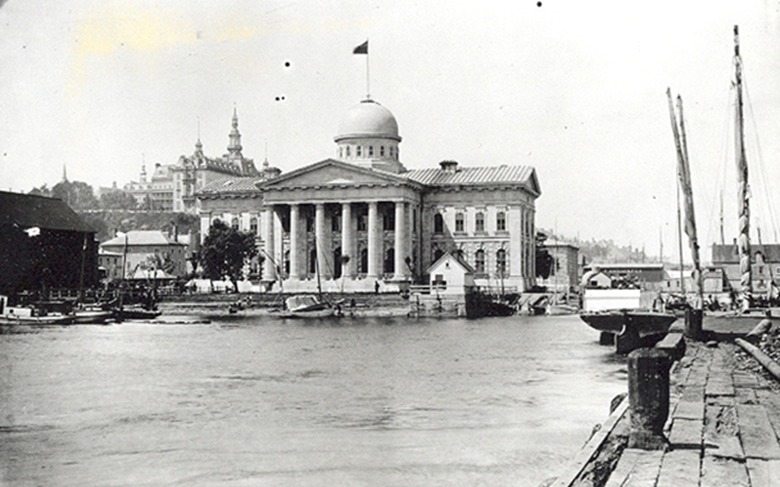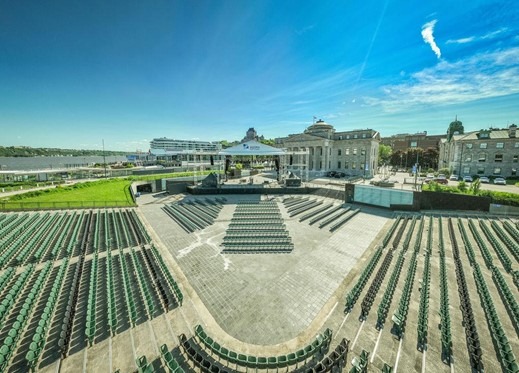
The customs building and the Agora
The booming timber trade in the mid-1800s made it necessary to build new customs offices, in the Pointe-à-Carcy sector. As can be seen in the photo below, the front staircase gave a passing boat’s purser direct access to the building from the river. Captains used to be required to stop here to register their passing ships.

Over the years, many ships lost their anchors and chains at the bottom of the water, making mooring increasingly dangerous. Much of this detritus had to be dredged out, especially in front of the customs building. The photo below shows some of the “harvest”.


Toward the middle of the 18th century, a municipal regulation stipulated that Québec City colonists had to dump their old furniture by piling it on the banks of the River for backfilling purposes. In 1984, over 38,000 objects of all kinds were found during the construction of the Musée de la civilisation du Québec, since the River’s waters once reached the museum’s current site!
Deadly fire
Erected in 1856, the Québec City customs building caught fire in 1864, and again in 1909 when the fire also destroyed the neighbouring Great Northern Railway of Canada Co.’s silo which then held 135,000 bushels of grain. In fact, the fire started in this silo.

In a few hours, the silo, customs building, and surrounding hangars, storehouses and piers were destroyed. The Empress of Ireland ocean liner, docked nearby, narrowly escaped the conflagration. The customs building was rebuilt with a third floor and a modified dome.

The Agora
The Port of Québec Agora was set up in 1984 for Québec City’s 450th anniversary celebrations of Jacques Cartier’s arrival in Canada. This is also the year the tall ships came.

Today, the Agora hosts shows of all kinds. There are over 2600 seats in the stands and with the central area, the Agora can accommodate as many as 5000 people.
Sources: ● Port de Québec, 1858-2008. Administration portuaire de Québec. ● Le Port et la Ville de Québec : indissociables ! Fondation Monique-Fitz-Back et Administration portuaire de Québec, 2016 https://fondationmf.ca/wp-content/uploads/2018/10/le_port_et_la_ville_de_quebec.pdf